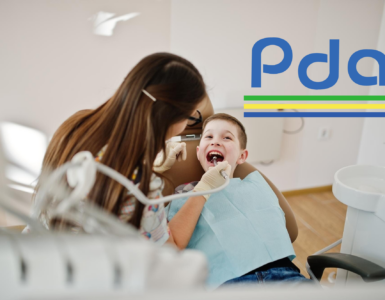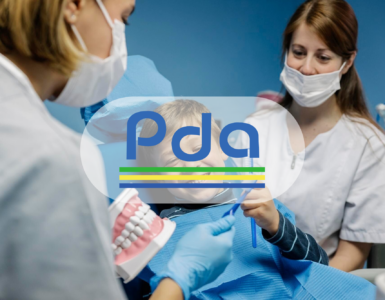Teaching children good oral hygiene practices is crucial for overall health but can sometimes be complicated. Many children, and even adults, make mistakes while brushing their teeth. These errors can compromise the effectiveness of their oral care routine and potentially lead to dental problems. This article highlights children’s common brushing mistakes and provides practical advice on correcting these habits, as advised by the best pedodontist Bergen County.
1. Brushing Too Hard
Problem: Many children believe scrubbing their teeth harder will make them cleaner. However, brushing too hard can damage the gums, leading to recession and sensitivity, and can wear down the enamel of the teeth.
Solution: Teach children to use a gentle touch when brushing. Using a toothbrush with soft bristles can also help, as it is less likely to harm the gums and enamel. Demonstrate the proper technique: Hold the toothbrush like a pencil to ensure a lighter grip and use small, gentle, circular motions to clean the teeth. The best pedodontist in Bergen County often recommends soft-bristled brushes for children to prevent gum damage.
2. Not Brushing Long Enough
Problem: Dentists recommend brushing twice daily for at least two minutes, but many children still need to reach this mark. Rushing through brushing can leave plaque and food debris behind, increasing the risk of cavities.
Solution: To help children brush for the full two minutes, use a timer or play a song for the duration of the brushing session. That ensures they brush for the right amount of time and can make the process more enjoyable. Many toothbrushes are also available with built-in timers to signal when two minutes have passed.
3. Missing Certain Areas of the Mouth
Problem: It’s common for kids to miss certain areas of their mouth, especially the back molars and the inner surfaces of their teeth. These areas are crucial because they are more susceptible to plaque buildup.
Solution: Teach your child a systematic approach to brushing. They can start with the outer surfaces of their teeth, then move to the inner surfaces, and finish with the chewing surfaces. It is crucial to ensure that children brush each section of their mouth (upper right, upper left, lower right, lower left) for an equal amount of time to avoid any neglected area. Therefore, make it a priority to emphasize this to children and ensure that they follow this rule while brushing their teeth.
4. Using the Wrong Amount of Toothpaste
Problem: Using too much toothpaste, especially when it is fluoridated, can be harmful if swallowed, making proper brushing techniques challenging to maintain.
Solution: A toothpaste smear (the size of a grain of rice) is sufficient for children under three. Children aged three to six should use a pea-sized amount. That helps prevent too much fluoride intake and ensures the child can comfortably brush without excessive foaming, which can discourage them from brushing long enough.
5. Not Changing Toothbrush Regularly
Problem: An old, frayed toothbrush could not properly clean teeth. Bristles that are bent and worn out do not reach all the nooks and crannies between teeth or along the gum line.
Solution: Replace your child’s toothbrush every three to four months or sooner if the bristles are matted or frayed. A new toothbrush can remove more plaque and effectively maintain oral health. Letting children pick their new toothbrush can also excite them about brushing. Regular check-ups with the best pedodontist Bergen County can also ensure that your child’s brushing tools are appropriate and effective.
6. Ignoring the Tongue
Problem: The tongue harbors bacteria that can contribute to bad breath and plaque buildup. Many children neglect to brush their tongues.
Solution: Encourage your child to brush their tongue gently each time they brush their teeth. They can do that with the toothbrush they use for their teeth, sweeping from the back of the tongue to the front to effectively remove food particles and bacteria.
7. Brushing Immediately After Eating
Problem: Brushing too soon after eating, especially acidic foods, can damage tooth enamel that softens by acid exposure.
Solution: It’s best to wait at least 30 minutes after eating before brushing. This waiting period allows saliva to neutralize the acid and help reharden the tooth enamel. If brushing right away is necessary, rinsing with water before brushing can help.
8. Inconsistent Brushing
Problem: Skipping brushing sessions or not having a routine can lead to inconsistent oral care, which increases the risk of dental problems.
Solution: Establish a consistent brushing schedule for your child. Brushing should be done at least twice daily — once in the morning and once before bed. Creating a routine that includes brushing as part of the daily morning and nighttime rituals can help instill the habit.
Conclusion
Correcting these common brushing mistakes in children is vital for their dental health. By addressing these issues, teaching proper techniques, and making oral hygiene a fun part of their daily routine, parents can help their children build a foundation of good dental habits that will benefit them throughout their lives. Proper supervision and regular check-ups with a dentist will ensure these practices are practical and that your child’s teeth remain healthy and strong. Regular consultations with the best pedodontist Bergen County can also provide tailored advice and ensure your child’s dental health is on the right track. To schedule a visit and ensure the best care for your child’s teeth, visit pdaridgewood.com today and book an appointment with a top pediatric specialist.





